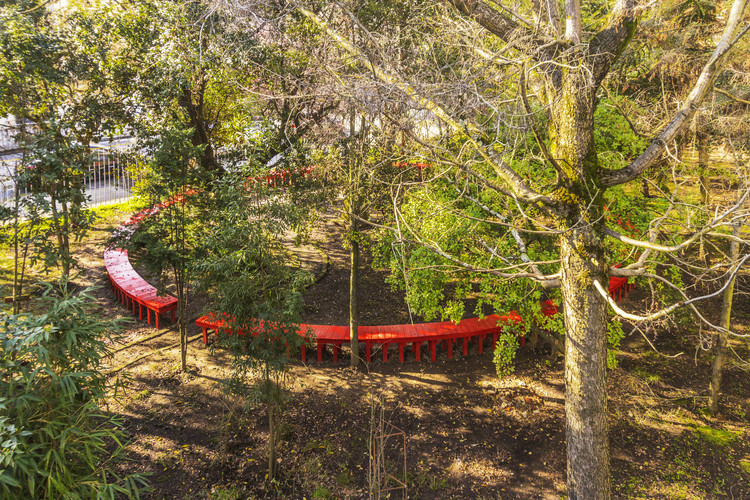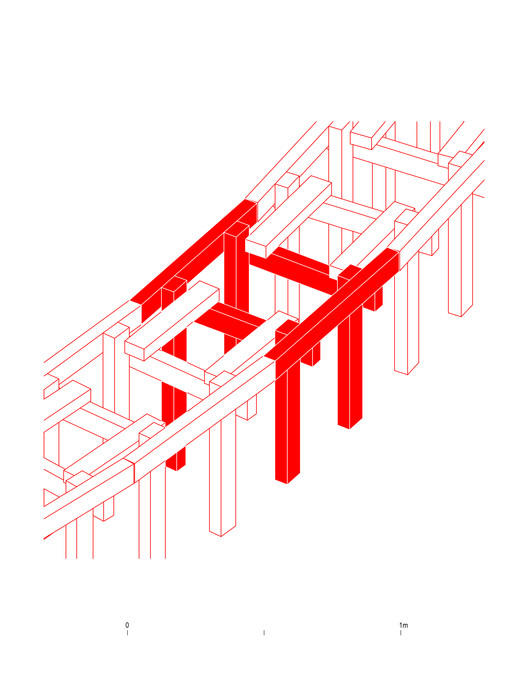
-
Architects: Azócar Catrón Arquitectos
- Area: 20 m²
- Year: 2018
-
Photographs:Patricio Zeiss, Nicolás Becerra
-
Manufacturers: AutoDesk, Arauco, Trimble Navigation
-
Lead Architects: Ricardo Azócar, Carolina Catrón

Text description provided by the architects. Infinity Bench is an installation developed for the Alejandro Merino Botanical Garden at the Enrique Molina Garmendia School in Concepción, in the south of Chile. Its goal is the reappraisal and restoration of this space, consigned until now, to just being a generous front garden of an emblematic city building.



























